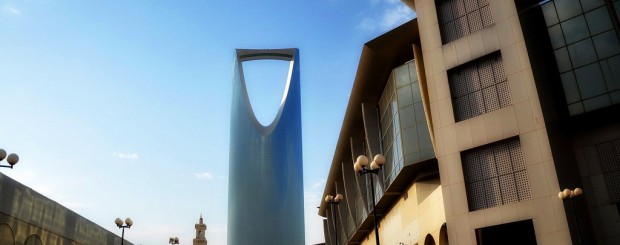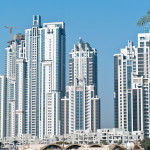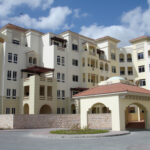Riyadh vs Dubai
Riyadh, capital city of the Kingdom of Saudi Arabia and Dubai, principal city of the Emirate of Dubai (though not the capital of the United Arab Emirates – that’s Abu Dhabi): what does each have to offer, and what should the visitor be aware of?
Dubai is certainly the most visible and internationally known face of the UAE. Just over two million people live in the Emirate, the majority in Dubai municipality itself, while greater Riyadh boasts a population of almost six million.
These aren’t the only points of contrast and similarity between these two geographically quite closely located hubs. Both play host to vast numbers of tourists each year: in Dubai’s case, fifteen million in 2015, while Riyadh sees a slightly larger number arrive, mostly for the Muslim Haj Pilgrimage or other religion-related visits.
So what is it like to visit these two desert metropolises, and what can the visitor do (or not do) when there?
Arrival
Dubai now boasts not one, but two international airports: Dubai International (DXB) and Dubai World Central (DWC) to handle an ever-expanding number of arrivals and departures.
If there is one thing that characterizes the traveller’s experience on arrival at both these airports, it is a speedy and efficient trip through Immigration to Baggage Claim, via Dubai Duty Free, and out into the Arrivals Hall of whichever terminal you have landed at.
The UAE has granted passport-free entry to quite a large number of countries, so if your passport is from one of these, a quick check and a barcode scan is all that is required to record your arrival. If you have a microchipped passport or a UAE E-Gate Card, it’s even quicker and you can do the whole process yourself.
Riyadh’s King Khalid International Airport (RUH), according to my sources, does not have such a good reputation. Long, inexplicable delays are common. Systems appear to just stop working, Immigration Officers leave their posts for long periods without explanation or replacement officers arriving, and these seem to be all too frequent occurrences.
One of the reasons for delays may be that Saudi Arabia grants passport-entry to a very small number of other countries, so each person arriving will require much checking of paperwork, recording, and stamping.
Hotels
Dubai’s hotels are legendary and I won’t dwell on them much here. Riyadh it seems, also has some very good hotels, the best of them seeming to be every bit as opulent and architecturally dazzling as the best Dubai has to offer.
Tripadvisor’s reviews of the best Riyadh hotels indicate a largely satisfied clientele, but it’s at this point that we have to address one of the major points of difference between the two cities. Hotel rooms in both cities will have mini-bars, but your Dubai mini-bar will have alcohol. Similarly, your Dubai hotel will have bars and restaurants that serve alcohol, but your Riyadh hotel will most emphatically not.
Out on the streets
This is where you will probably begin to notice the real differences. Riyadh is a much more segregated society. Women don’t (and can’t) drive in Saudi Arabia. In the UAE they can, and you’ll see plenty of women drivers, both expatriate and UAE national women.
On the subject of cars and driving, gasoline is much cheaper in Riyadh (and Saudi Arabia) than in the UAE: in $US terms, a litre of gas in Riyadh will cost just 0.16 cents, as opposed to 0.57 cents in Dubai. Cars may also be cheaper too, but it’s hard to get exact points of comparison, because specifications vary from country to country for the same model.
The strict separation of men and women (unless you can prove you are a spouse or a very close relative) in Saudi Arabia is carried out by an organization called the Committee for the Promotion of Virtue and the Prevention of Vice, known internationally as the “Religious Police” or Mutawas (sometimes spelled Muttawas).
They maintain a very visible presence in every part of Saudi society and are fairly easily recognizable – they have quite long beards and they do not wear the traditional agal (head-ring) to keep their long head shawls in place. You can read more about the Mutawas here.
There is no such body in Dubai. Maintaining observance of the law in Dubai (and that includes making sure people are dressed in a reasonable manner – Dubai does have a dress code) is solely the job of the police.
As a visitor to Riyadh, as a solo male, you’ll probably not have any contact with the Mutawas. As a Western female accompanied by your spouse, you will probably also not attract any undue attention, but your male companion might.
Avoid any displays of public affection – even just standing talking in a public place or discreetly holding hands as you walk can attract ire. The Mutawas almost certainly won’t speak English or any other language apart from Arabic, either, so you won’t be able to explain that it was an innocent mistake.
Female visitors, of course, are required to cover up – that means an abaya and a shayla (a long, loose, full body-covering over garment and a headscarf.) Here are a couple of American reporters, suitably dressed for duty in Saudi Arabia – the blonde would attract attention from the mutawas for the amount of hair on display.
A tip from a woman who visits Riyadh from Dubai frequently on business: wear your abaya on the flight; it’s much easier than trying to put it on in the plane and you certainly need it before exiting the aircraft.
And to reiterate, you’ll see Emirati national women wearing abayas and shaylas in Dubai, but you don’t have to!
Malls
Both Riyadh and Dubai have strong mall cultures: both Saudis and Emiratis love shopping.
Malls also serve as climatic oases – somewhere to seek shelter, food, and drink from the harsh extremities of the outside weather. But there are a few important differences to be aware of.
All business must stop in Riyadh malls at Prayer Times: shops must be empty of customers, doors closed, and all Muslims male and female must head for the Mosques and Prayer Rooms in the Malls.
There are Mutawa offices in all malls, and they are out in the corridors strictly enforcing this. So where does this leave you, the non-Muslim visitor? As soon as you hear the call to prayer – and don’t worry, you will – if you are female, you can head for the Ladies Only floor and wait here in peace and quiet.
The shops will be shut, but you can take your abayas and shaylas off – the Matawas won’t go there; no males will.
Men? Well, you can either go home, back to your hotel, or just sit down somewhere and wait until the shops and restaurants open up again. How long does the closure last? Allow about 30 minutes.
You’ll also hear the call to prayer in Dubai Malls, but there are no closures. All the businesses have flexible rosters to allow Muslim staff to go and pray without disrupting the normal flow of commerce.
There’s much more to discuss, of course, than space allows. Despite the relative strictures on westerners and other expatriate workers, many people find the friendliness of the Saudi people in Riyadh more than compensates for the lack of a more “normal” liberal lifestyle that is available in Dubai.








